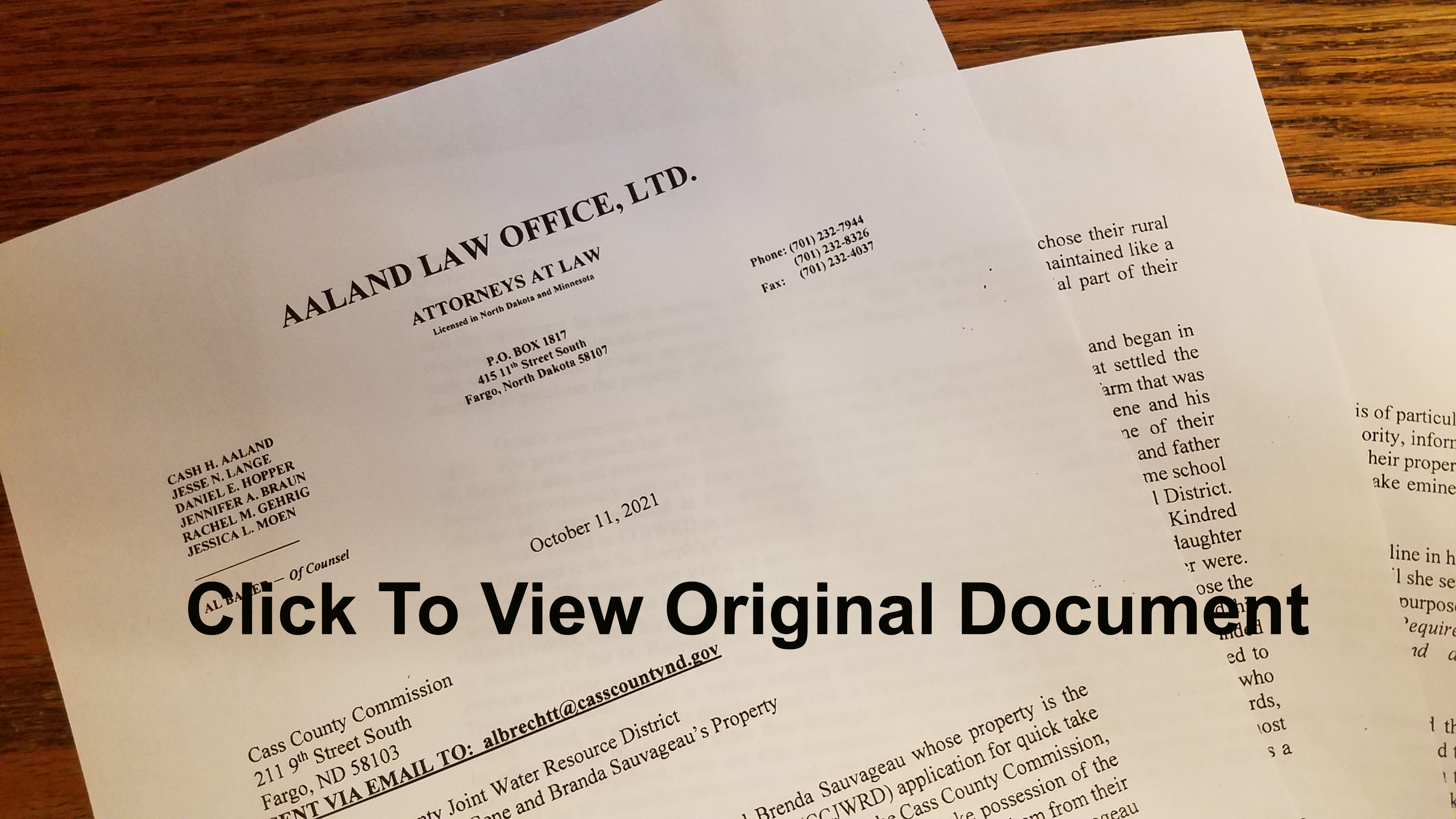<< Read and Download Original National Wildlife Federation Comment Letter >>
November 7, 2011
VIA U.S. MAIL AND E-MAIL (terryl.l.williams@usace.army.mil)
Headquarters, U.S. Army Corps of Engineers
ATTN: CECW-P (IP)
7701 Telegraph Road
Alexandria, VA 22315-3860
Re: Comments on Final Feasibility Report and Environmental Impact Statement on the Fargo-Moorhead Metropolitan Area Flood Risk Management Project on the Red River of the North
Dear Ms. Williams;
The National Wildlife Federation (NWF) has previously identified problems with the Feasibility Report and Environmental Impact Statement on the Fargo-Moorhead Metropolitan Area Flood Risk Management Project on the Red River of the North. At the draft and supplemental draft stages of the project, NWF urged the U.S. Army Corps of Engineers (Corps) to consider more environmentally and community-friendly alternatives. The topics of concern raised in previous comments remain relevant as the Corps has made few changes in the proposed plan to address issues of fish and wildlife health, wetland and grassland preservation, ecological sustainability, and mitigating climate change in concert with flood control and water management. NWF believes that structural and non-structural alternatives that provide environmental and economic benefits beyond flood management must be included in the proposed plan.
The proposed plan fails to recognize that much ofthe Red River Basin flooding has been a direct result of wetland and grassland elimination during the past century for the sake of agricultural development. In the Final Feasibility Report and Environmental Impact Statement (FFREIS), the Corps includes the option to “pass additional water through the metro area … at Fargo” to allow for the diversion project to operate less frequently.! Measures such as this are insufficient to mitigate upstream staging impacts. They also fail to protect water quality, fisheries connectivity, and bird and wildlife habitats. The rehabilitation of wetlands and grasslands could be used as temporary flood storage that would prevent dangerous flood levels as these ecosystems have remarkable abilities to store excess water runoff and provide much needed wildlife habitat.
The Corps has not taken sufficient measures to mitigate the harmful environmental impacts and increased threat of flooding to upstream and downstream communities. The current plan threatens the upstream communities, including Hickson, Oxbow, and Comstock, by placing them under feet of water in flood years. The adverse impacts of the proposed plan include buyout and relocation of home and property owners in communities impacted by the staging area.2 A basin-wide approach to flood risk management would benefit the environment and local communities by providing a full range for use of non-structural alternatives which protect communities from the additional flooding caused by diversion channels and levees.
The project should not continue to be pushed through without the protection of local economies, air and water quality, the natural environment, and fish and wildlife resources through the incorporation of non-structural techniques for flood control. NWF sincerely thanks you for considering these comments on the Final Feasibility Report and Environmental Impact Statement on the Fargo-Moorhead Metropolitan Area Flood Risk Management Project on the Red River of the North. Please do not hesitate to contact us if you have questions or would like additional information.
Thomas France, Regional Executive Director
National Wildlife Federation
Views: 43
